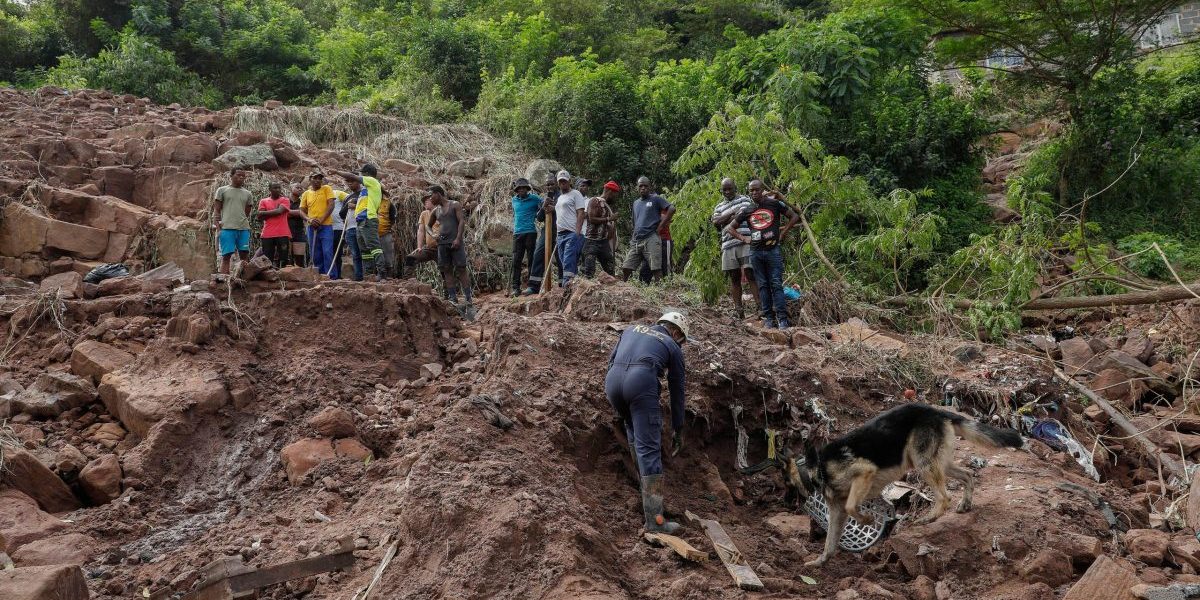Scientists have calculated that the devastating floods in KwaZulu-Natal earlier this year were made twice as likely by the effects of climate change. With at least 435 people dead and massive damage to homes and infrastructure, South Africa has received a sobering reminder of the interconnectedness of nature, society and the economy.
World Environment Day is commemorated this year on 5 June under the theme of ‘One Earth’. It is an opportunity to reflect on the risks, but also the opportunities, that we face in our relationship with nature. The United Nations has said that 2022 could be a seminal year for the environment. We have entered the year with familiar yet pressing environmental challenges that need effective and prompt solutions. The Intergovernmental Panel on Climate Change earlier this year released yet another bleak assessment of progress on combatting climate change, warning that it is ‘now or never’ if the world is to keep global warming to 1.5°C above preindustrial levels.
South Africa, in the throes of loadshedding and grappling with slow growth, unemployment and inequality, has made halting progress on the climate agenda. Yet positive steps are being taken. South Africa submitted more ambitious targets on cutting carbon emissions to the United Nations last year, a National Climate Change Adaptation Strategy has been adopted and a Climate Bill is currently being developed that will make it easier to coordinate climate responses at national, provincial and municipal levels. Regulatory amendments made in 2020 have made it easier for companies and municipalities to generate their own electricity, with several companies and large metros announcing plans to ramp up investment in renewable energy sources. While there continues to be mixed messages around the government’s view on the future of coal, a deal involving several international partners worth US$8.5 billion is being developed to support South Africa’s transition away from fossil fuels. This Just Energy Transition Partnership explicitly recognises the need to support workers and communities who will be affected by the energy transition.
Later this year, a new global biodiversity agreement is expected to be concluded through the Convention on Biological Diversity. This will set new global targets for addressing biodiversity loss and conserving nature. A recent assessment has showed that 9.2% of South Africa’s total land area is protected and managed for biodiversity conservation, an increase of more than 10% since 2015. That is a land area as large as Gauteng and KwaZulu-Natal combined. Back in 2019, 20 new or expanded marine protected areas were gazetted, meaning that the share of South Africa’s marine territory under protection increased from less than 1% to 5%. These achievements are still short of the 30% protection for land and sea areas called for by the draft post-2020 Global Biodiversity Framework, but clearly South Africa is moving in the right direction.
Of course, conservation success cannot be measured only by acreage under protection; especially when poaching in both our land-based and marine parks continues to be a major challenge. Rhino poaching has been steadily reduced and was at about a third of peak levels in 2020. Unfortunately, those numbers ticked up last year and indications are that numbers are again high this year. There has been much interest in the US$150 million “Rhino Bond” announced by the World Bank earlier this year as an innovative new financing mechanism to support wildlife conservation in South Africa. Innovative financing and partnerships have become a central focus of efforts to achieve global biodiversity goals, including ways to ensure co-benefits to communities and thus lay the foundation for sustainable conservation partnerships.
Creating ‘triple win’ solutions for nature, communities and the economy will be key to addressing the sustainability challenges confronting humanity. Fortunately, there are an increasing number of success stories and innovative approaches showing that such triple wins are possible. Nature-based solutions and restoration economy initiatives are providing tangible evidence that protecting and restoring ecosystems also bring economic and social benefits, including for marginalised communities and groups such as women and youth.
Earlier in June, governments and other stakeholders from around the world met in Sweden to commemorate the anniversary of the first major United Nations conference on the environment, which was hosted 50 years ago. That gathering in 1972 led to the establishment of the United Nations Environment Programme and spurred environmental action across a range of themes. This past week’s Stockholm+50 conference highlighted the importance of multilateralism in tackling the interlinked crises of climate, biodiversity and pollution. Three major frameworks are shaping this integrated response, the United Nations Sustainable Development Goals, the Paris Agreement on climate change action, and the post-2020 Global Biodiversity Framework. In Africa, these global efforts are being matched by a multitude of programmes, initiatives and policy measures at the regional, national and sub-national level, and across stakeholder groupings. Earlier this year, African Heads of State and Government adopted the African Union Climate Change and Resilient Development Strategy and Action Plan, a significant step as the continent prepares for the next round of global climate talks, which will be hosted in Egypt in November this year.
While the warnings around humanity’s impact on the environment, and in turn the human costs of these crises, will continue to capture headlines, it is important to acknowledge and celebrate progress, and recognise that sustainable solutions for people and the planet, while difficult to achieve, is no pipe dream.








